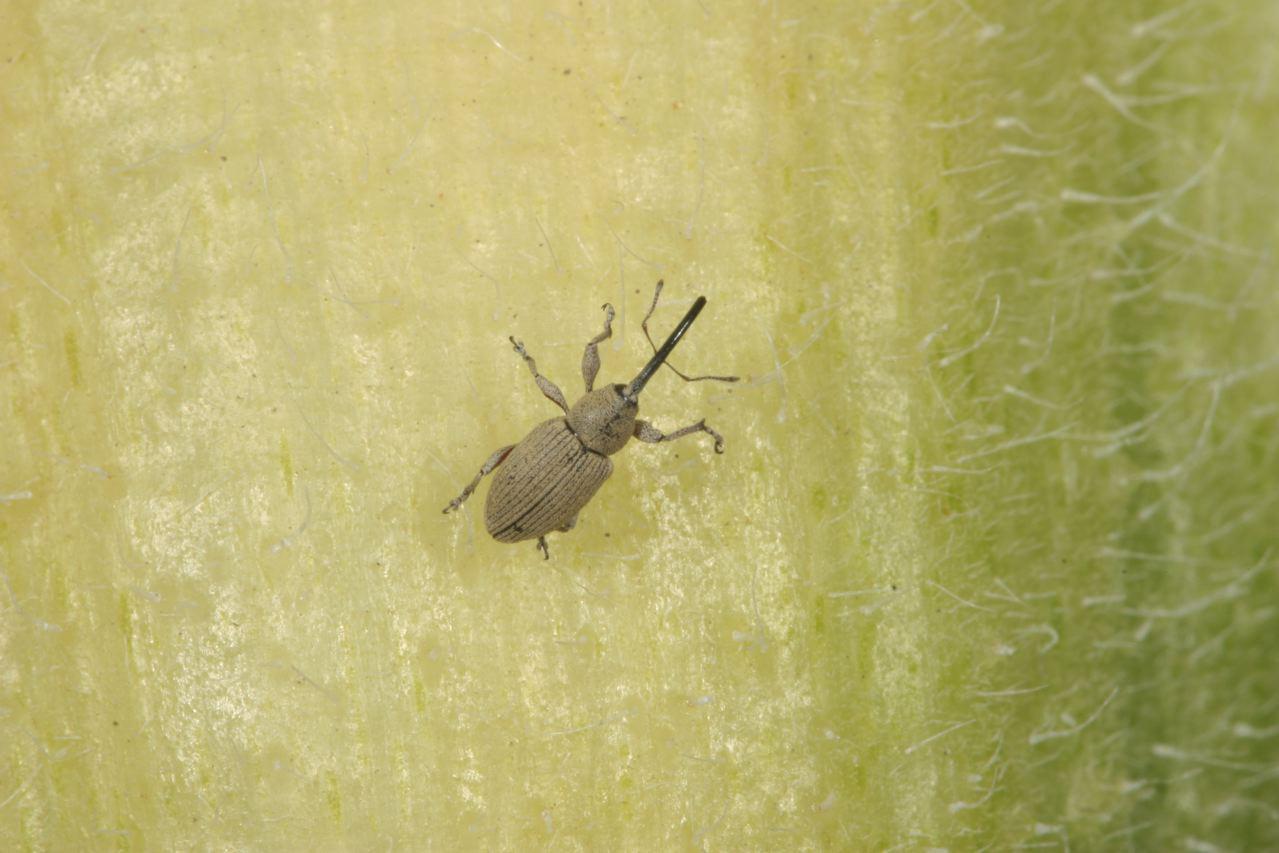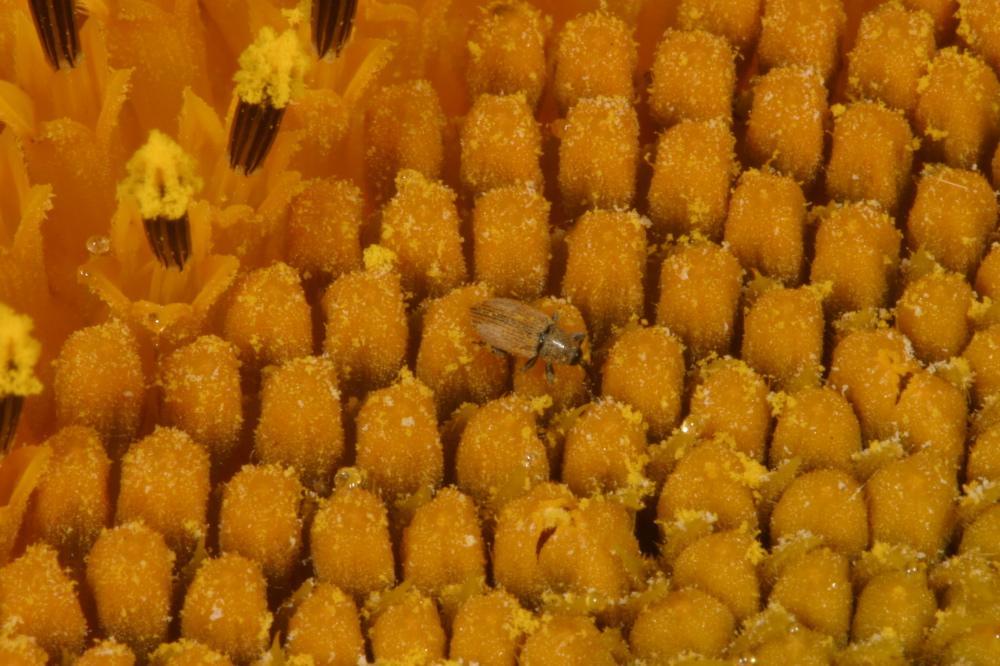Sunflower Insects: Seed weevils
Gray Seed Weevil, Smicronyx sordidus (Coleoptera: Curculionidae)

Red seed weevil, Smicronyx fulvus (Coleoptera: Curculionidae)

There are two species of weevils that attack sunflower seeds in Kansas and can result in yield reductions. The Gray Seed Weevil, Smicronyx sordidus, and the Red Seed Weevil, Smicronyx fulvus.
Both weevils produce one generation per year and feed on plant tissue under the bracts of developing flowers, causing little damage. Larvae of both species feed internally within seeds. At maturity, an exit hole is cut and the larva drops to the ground and burrows into the soil where it overwinters. Larvae often can be found in seeds at harvest, especially when harvest is early, but most die in storage without causing further damage.
The red seed weevil is more commonly responsible for economic damage than the gray seed weevil. There are fewer gray seed weevils, and the seeds damaged by the gray seed weevil are more likely to be removed during the threshing process. More detailed information on sunflower seed weevils can be found in the KSRE publication MF3129: Sunflower Seed Weevils.
Please refer to the most recent version of the Sunflower Insect Management Guide for control options.
Page last updated 2/6/2014 by J.P. Michaud.